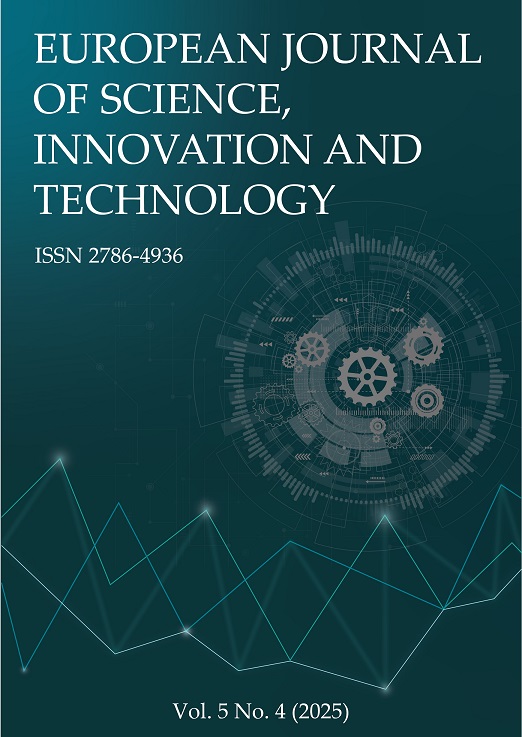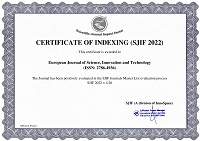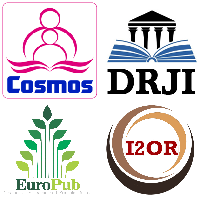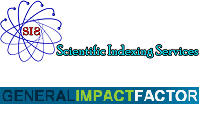Biodegradation Aromatic Hydrocarbons of Naphthalene by Aspergillus flavus and Penicillium fumigates
Abstract
Filamentous fungi were identified in the soil that had been contaminated by petroleum hydrocarbon and wastewaters released by the oil refinery of Nasiriyah in East part of the Nasiriyah city and Nasiriyah oil field (Al-Kati’a) by using dilution method. The study demonstrated a strong capability of Aspergillus flavus and Penicillium fumigatus to remove aromatic hydrocarbons, specifically Naphthalene. The biodegradation process was carried out under optimized conditions, using various concentrations of Naphthalene. The findings revealed that Aspergillus flavus and Penicillium fumigatus were the highest frequently isolated fungi, with Aspergillus flavus showing a 100% occurrence rate and Penicillium fumigatus 97%. Both fungi were exposed to petroleum hydrocarbons in both solid and liquid media and successfully demonstrated the capacity for degradation Naphthalene. Their colony diameters were measured on solid media, confirming their adaptability and growth in the presence of Naphthalene. Both fungi were capable of degrading Naphthalene at a concentration of 50 ppm. The degradation products and residual Naphthalene levels were identified using Fourier-transform infrared spectroscopy (FTIR) and gas chromatography-mass spectrometry (GC-MS). The results of statistical analysis showed that the two fungi’s performance differed significantly.
References
Al Sailawi, H. A., Misnan, R., Yadzir, Z. H. M., Abdullah, N., Bakhtiar, F., Arip, M., ... & Ateshan, H. M. (2020). Effects of Different Salting and Drying Methods on Allergenicity of Purple Mud Crab (Scylla tranquebarica). Indian Journal of Ecology, 47(4), 1173-1179.
Alhusainy, K.T., & Kttafah, G.H. (2025). Prevalence Study of Cyanophyta Algae in the Main Branch of the Tigres River and its Association with the Nation's Changing Climate. Egyptian Journal of Aquatic Biology and Fisheries, 29(4), 1029-1040. https://doi.org/10.21608/ejabf.2025.442654.
Al-Husseini, K. H., & Alsalman, A. I. M. (2020). Quarterly variation and their impact on phytoplankton dynamics in the Gharraf River environment in southern Iraq. Plant Archives, 20(1), 1354-1360.
Al-Husseini, K. H., & Alsalman, I. (2019). Epipelic algae and their relation to the nature and composition of the bottom in a section of the Gharaf river in southern Iraq. Plant Archives, 19(2), 4445-4452.
Al-Jawhari, I. F. (2016). Ability of sediments fungi in biodegradation of diesel fuel. Indian Journal of Pure & Applied Biosciences, 4(2), 27-37.
Al-Jawhari, I. F. H. (2015). Ability of some fungi isolated from a sediment of Suq-Al Shuyukh marshes on biodegradation of crude oil. International Journal of Current Microbiology and Applied Sciences, 4(1), 19-32.
Al-Saad, H.T., Saeed, A. & Salman, N.A. (2003). Marine Pollution. Hadida University Pub. Yamen, 260P.
Al-Saidi, N.J. (2015). A study of petroleum wastewaters to Al – Nasiriya refinery and evaluation efficiency some soil and water microorganisms in treatment. M.Sc. thesis. College of Sciences, Thi-Qar University. Iraq.
AL-Taher, Q. M., Akbar, M. M., & Al-Qarooni, I. H. (2020). Bioaccumlation of Total Petrolum Hydrocarbons in Pseudodontopsis euphraticus and Bellamya bengalensis, In Euphrates River, Al-Nassiriyah City/Iraq. Journal of Basrah Researches (Sciences), 46(2).
Abdullah, M. S., & Kttafah, G. H. (2020). Identification of the Most Common Dust Fungi at Universiti Pendidikan Sultan Idris, Malaysia. Eurasian Journal of Chemistry, 14(3), 1-8.
Abdullah, M. S., Kttafah, G. H., & Nasuruddin, M. H. (2022). Allergenic Potential and Cross-Reactivity of Fungal Species Isolated from the Indoor Environment. Jurnal Teknologi (Sciences & Engineering), 84(3), 47-57.
Ateshan, H.M., & Saxena, P.R. (2015). Assessment of Physico-Chemical Parameters of Kattamaisamma Lake of Sooraram Village, Hyderabad, Telangana State, India. International Journal of Advanced Research in Science and Technology, 4(4), 437-440. https://doi.org/10.62226/ijarst20150423
Ateshan, H. M., Misnan, R., Sinang, S. C., & Alsailawi, H. A. (2019). Bioaccumulation of heavy metals in orange mud crab (Scylla olivacea) from Sungai Merbok, Kedah. International Journal of Research in Pharmaceutical Sciences, 10, 654-658. https://doi.org/10.26452/ijrps.v10i1.1897
Ateshan, H. M., Misnan, R., Sinang, S. C., & Koki, I. B. (2020). Evaluation of Water Pollution and Source Identification in Merbok River Kedah, Northwest Malaysia. Malaysian Journal of Fundamental and Applied Sciences, 16, 458-463. https://doi.org/10.11113/mjfas.v16n4.1735
Ateshan, H., & Misnan, R. (2025a). Estimating the Concentrations of Toxic Elements and Contaminated Bacteria of Groundwater in the City of Al-Muthanna/Iraq. Egyptian Journal of Aquatic Biology and Fisheries, 29(2), 1745-1757. https://doi.org/10.21608/ejabf.2025.421095
Ateshan, H., & Misnan, R. (2025b). Estimation of Heavy Metal Concentrations in Euphrates River Water and Sediments in Thi Qar City. Egyptian Journal of Aquatic Biology and Fisheries, 29(2), 1759-1770. https://doi.org/10.21608/ejabf.2025.421097
Azemi, N. F. H., Misnan, R., Keong, B. P., Mokhtar, M., Kamaruddin, N., Fah, W. C., ... & Ateshan, H. M. (2021). Molecular and Allergenic Characterization of Recombinant Tropomyosin from Mud Crab Scylla olivacea. Molecular biology reports, 48(10), 6709-6718.
Azubuike, C. C., Chikere, C. B., & Okpokwasili, G. C. (2016). Bioremediation techniques–classification based on site of application: principles, advantages, limitations and prospects. World J. Microbiol. Biotechnol., 32, 1–18.
Batelle, C. D. (2000). Mushrooms: Higher Macro fungi to clean up the environment. Environmental Issues, Fall.
Giraud, F., Guiraud, P. Kadri, M., Blake, G., & Steiman, R. (2001). Biodegradation of anthracene and fluoranthene by fungi isolated from an experimental constructed wetland for wastewater treatment. Wat. Res., 35, 4126–4136.
Ha, A., Rosmilah, M., Keong, B. P., & Ateshan, H. M. (2019). The Effects of Thermal and Non-Thermal Treatments on Protein Profiles of Scylla tranquebarica (Purple Mud Crab). Plant Archives, 19(2), 813-6.
Jasim, H. A., Misnan, R., Yadzir, Z. H. M., Abdullah, N., Bakhtiar, F., Arip, M., & Keong, P. B. (2021). Identification of Common and Novel Major Crab Allergens in Scylla tranquebarica and the Allergen Stability in Untreated and Vinegar-treated Crab Identification of Major Crab Allergens in Scylla tranquebarica. Iranian Journal of Allergy, Asthma and Immunology, 20(1), 76. https://doi.org/10.18502/ijaai.v20i1.5414
Kanaly, R. A., & Harayama, S. (2000). Biodegradation of high-molecular-weight polycyclic aromatic hydrocarbons by bacteria. Journal of bacteriology, 182(8), 2059-2067.
Klich, M., & Pitt, J. (1992). A laboratory guide to the common Aspergillus species and their teleomorphs. Common. Sci. Indus Res Org. Australia.
Nwachukwu, S. C. U., & Ugoji, E. O. (1995). Impacts of crude petroleum spills on microbial communities of tropical soils. International Journal of Ecology and Environmental Sciences, 21, 169-176.
Perelo, L. W. (2010). Review: In situ and bioremediation of organic pollutants in aquatic sediments. Journal of Hazardous Materials, 177, 81-89.
Seiyaboh, E., & Jackson, F. (2017). Level and impact of hydrocarbon in sediment characteristics of Imiringi oil and gas field facilities in the Niger Delta. In Proceedings of the 15th International Conference on the Environment Science and Technology (Vol. 1370). Rhodes, Greece.
Vidali, M. (2001). Bioremediation. an overview. Pure and applied chemistry, 73(7), 1163-1172.
Wick, A. F., Haus, N. W., Sukkariyah, B. F., Haering, K. C., & Daniels, W. L. (2011). Remediation of PAH-contaminated soils and sediments: a literature review. CSES Department, internal research document, 102.
Zafra, G., Absalón, Á. E., Cuevas, M. D. C., & Cortés-Espinosa, D. V. (2014). Isolation and selection of a highly tolerant microbial consortium with potential for PAH biodegradation from heavy crude oil-contaminated soils. Water, Air, & Soil Pollution, 225(2), 1-18.
Copyright (c) 2025 Haider Msahir Ateshan, Alyaa Hussein Talib

This work is licensed under a Creative Commons Attribution 4.0 International License.


 ISSN
ISSN 











